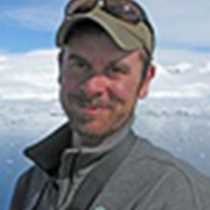Carcass Island & New Island
Carcass Island, named after the HMS Carcass which visited this area in the late 18th century, is situated in the NW corner of the Falkland archipelago. Fog abounded this morning when the National Geographic Explorer pulled into Port Pattison. A long hike left early and walked the three kilometers around the cove watching many bird species along the way. Flightless Steamer ducks and their ducklings swam in tide pools along the shore. The tussac grass grew head height and we marveled at the variety of birds that made use of this grassy habitat. Black-throated finches, Tussac birds, and Grass wrens watched us from behind wind blown mounds. The highlight of the bird watching was the Striated caracara feeding its chubby chicks on a steep rocky pinnacle. Later in the morning everyone met up at the settlement for a wonderfully prepared gastronomic treat. An enormous tea had been made and cakes and scones with fresh cream filled the tables. When all were stuffed full and on a sugar high, a stroll around the property quickly brought closer views of the Striated caracara bird. The caracara is a bird of prey whose main breeding population resides here in the West Falklands and can be considered an endemic species.
New Island used to be a provisioning base for American whalers in the 19th century. It is currently home to Kim and Tony Chater, two previous Lindblad employees who have since taken up residence on the island and now offer information and artwork pertaining to this island/avian oasis. Besides their two lovely children, the Chater’s also share the island with a large black-browed albatross colony, hundreds of blue-eyed shag’s and an expansive rock-hopper penguin colony. The zodiacs seemed dwarfed by the wrecked hull of the Protector, a WWII era minesweeper that was left on the beach there. Most chose to hike across the island to enjoy our first views of these rockhopper penguins. Their yellow tufts stood out comically in the rather bleak but beautiful landscape. This steep cliff also afforded up close encounters with the resident black browed albatross. Some were sitting on young chicks in the nest and others were paired together dancing and greeting each other with bending necks and deep throated calls. Other animals ran about in the grassy slopes like rabbits and upland geese. Wildlife was in abundance in this, our final landing of the trip.
A very wonderful place. Everyone envied the Chater family, who get to call this amazing wilderness home.
Carcass Island, named after the HMS Carcass which visited this area in the late 18th century, is situated in the NW corner of the Falkland archipelago. Fog abounded this morning when the National Geographic Explorer pulled into Port Pattison. A long hike left early and walked the three kilometers around the cove watching many bird species along the way. Flightless Steamer ducks and their ducklings swam in tide pools along the shore. The tussac grass grew head height and we marveled at the variety of birds that made use of this grassy habitat. Black-throated finches, Tussac birds, and Grass wrens watched us from behind wind blown mounds. The highlight of the bird watching was the Striated caracara feeding its chubby chicks on a steep rocky pinnacle. Later in the morning everyone met up at the settlement for a wonderfully prepared gastronomic treat. An enormous tea had been made and cakes and scones with fresh cream filled the tables. When all were stuffed full and on a sugar high, a stroll around the property quickly brought closer views of the Striated caracara bird. The caracara is a bird of prey whose main breeding population resides here in the West Falklands and can be considered an endemic species.
New Island used to be a provisioning base for American whalers in the 19th century. It is currently home to Kim and Tony Chater, two previous Lindblad employees who have since taken up residence on the island and now offer information and artwork pertaining to this island/avian oasis. Besides their two lovely children, the Chater’s also share the island with a large black-browed albatross colony, hundreds of blue-eyed shag’s and an expansive rock-hopper penguin colony. The zodiacs seemed dwarfed by the wrecked hull of the Protector, a WWII era minesweeper that was left on the beach there. Most chose to hike across the island to enjoy our first views of these rockhopper penguins. Their yellow tufts stood out comically in the rather bleak but beautiful landscape. This steep cliff also afforded up close encounters with the resident black browed albatross. Some were sitting on young chicks in the nest and others were paired together dancing and greeting each other with bending necks and deep throated calls. Other animals ran about in the grassy slopes like rabbits and upland geese. Wildlife was in abundance in this, our final landing of the trip.
A very wonderful place. Everyone envied the Chater family, who get to call this amazing wilderness home.




